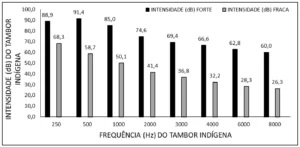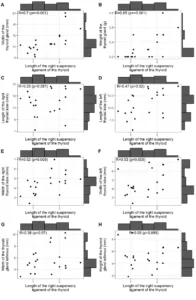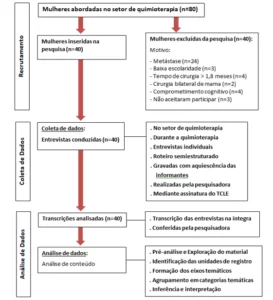LOSS, Thaís Baratela [1]
FARIA, Mariana Bastos [2]
ESPÓSITO, Mário Pinheiro [3]
ABSTRACT
The present article aims to analyze aspects related to presbycusis and unilateral sensorineural hearing loss. The problem question of this article can be defined as: what is the most effective method of rehabilitation of the individual with profound unilateral sensorineural hearing loss with preserved hearing in the contralateral ear, considering that the patient has a profound degree of hearing loss in the ear other, preserved hearing ?. The general objective of this article is to: suggest the most effective method of treatment, comparing the treatment of these patients with hearing aids and cochlear implant on the side of the loss, considered the extension of hearing loss. To suggest the most effective method of treatment, we opted for a bibliographic review of national and international studies on the subject. Considering the wide range of references associated with hearing loss, we chose to make a secondary analysis, with the data collected in previous research, especially contained in the Scielo, PubMed and related databases. As a limitation of the method employed, it is noted a certain impossibility to verify other factors that can be associated such as genetic diseases or harmful daily habits. As a result, it was concluded that Cochlear Implant (CI) is the most indicated method, since it presents significant responses in the evaluated users.
Key words: Cochlear Implant, Hearing Aids, Unilateral Neurosensory Hearing Loss.
1. INTRODUCTION
One of the most significant phenomena in Brazil has been the aging of the population. According to IBGE (2015) data, the estimated population in 2015 was 204.9 million people, with annual growth of 1% between 2005 and 2015. Over the same period, the share of adults increased from 36.2% to 41%, and the share of the population, made up of people over 60 years old, rose from 9.8% to 14.3%. Thus, it can be seen that population growth over 60 years is a consistent demographic reality in the country. The Brazilian reality is, therefore, marked by the thematic of aging, which provokes important reflections, regarding the health aspects of this population.
In this context, it must be said that one of the main sensorial changes associated with aging is hearing loss or deficiency. Admittedly, aging causes physical, psychological, and social changes, and one of the major changes relates to hearing ability. Presbycusis is the hearing loss associated with aging.
It should be noted that the elderly who are affected by presbycusis experience a decrease in auditory sensitivity and reduced speech intelligibility, which may, depending on the extent of the loss, compromise verbal communication.
In these cases, there is an important discussion regarding the most effective methods of rehabilitation of the individual with presbycusis. Some studies point to the prevalence of cochlear implant as the most effective method of coping with the problem, while other studies point in the opposite direction, claiming a greater efficacy of osteoimplanar hearing aids.
In addition, in addition to presbycusis, there are other causes of unilateral sensorineural hearing loss, which may be mentioned: a) neurinoma, in which the vestibulocochlear nerve has its myelin sheath degraded by tumors, generating progressive hearing loss; b) congenital, when genetic mutations occur, which causes irreversible unilateral loss; c) traumas, such as accidents at work, car, or exposure to excessive and constant noise. All these forms can cause hearing loss and the search for more effective methods of coping with the problem, as well as presbycusis, are objectives of this work.
In this sense, the present article proposes to discuss the theme, pointing out the achievements of the two theoretical aspects, evaluating the methods used, to suggest, in the end, the most appropriate methods of rehabilitation of the patients unilateral sensorineural hearing loss, to be dependent, of course , of the extent of such loss.
2. PROBLEM-ISSUE
Considering the importance of the topic discussed in this article, the problem question can be defined as: what is the most effective method of rehabilitation of the individual with profound unilateral sensorineural hearing loss with preserved hearing in the contralateral ear, considering that the patient has a profound degree of loss in one ear and in the other hearing preserved?
3. GENERAL OBJECTIVE
The general objective of this article can be described as follows: to suggest the most effective method of treating patients with unilateral sensorineural hearing loss, comparing the treatment of these patients with osteoimplanted hearing aids and the cochlear implant on the side of the loss, considered the extension of hearing loss.
4. METHODOLOGY
To suggest the most effective method of treatment for presbycusis patients and unilateral sensorineural hearing loss, a bibliographic review of national and international studies on the topic was chosen. Considering the wide range of references associated with hearing loss, we chose to make a secondary analysis, with data collected in previous research, especially contained in the databases Scielo, PubMed and others related to the topic.
As a limitation of the method employed, there is a certain impossibility to verify other factors that may be associated with presbycusis, such as genetic diseases or harmful everyday habits. Therefore, the hearing loss analysis does not involve more detailed assessments of genetic habits and predispositions, which were not addressed in the studies that were evaluated.
Treatment / Analysis of data
The data were tabulated and treated, considering the extent and amplitudes of their primary sources, for a better understanding of this work.
5. Theoretical Framework
The technology is a complementary form of support for the rehabilitation of patients with sensorineural hearing loss. However, there are individuals who do not adapt to conventional prostheses, which suggests the possibility that the cochlear implant may be indicated for these patients because:
Adaptation to the use of hearing aids is often a complex process, especially for the elderly, who usually require more time to assimilate all stages of the adaptation process and adjustment to amplification[4].
According to Miranda et al. (2008), in order to obtain the difficulties and benefits of the use of hearing aids by the elderly, a demonstrative study was performed with patients who met the following criteria: a) being over 60 years old, b) mild to moderately severe bilateral sensorineural hearing loss; c) do not present locomotive disabilities; d) have received hearing aids within a maximum period of two weeks. The study was previously approved by the Ethics Council of UNIFESP.
From the criteria, 40 elderly were selected, of which 31 were until the end of the analysis procedures. Miranda et al (2008) describes that the elderly participants in the studies were assisted by speech therapists and participated in clarification meetings regarding hearing loss and the use of prostheses.
Among the data presented by the authors, it is possible to note that 28.5% of the participants pointed out, as a difficulty, "to understand what people are talking about", while pointing out, as a benefit, "improvements in social / professional life" 7%), "dialogue with family and friends" (33.9%) and "relationship with family and friends" (45.9%).
In conclusion, the authors point out that "there is a statistically significant relationship for the benefit of improving self-esteem and quality of life." Thus, the study suggests that hearing aids are well accepted and bring important benefits to the quality of life of the elderly, although it should be emphasized that hearing loss is minimized, not recovered.
5.1. AASI, COCLEAR IMPLANT AND OSTEO-PLASTIC PROSTHESES
The Individual Sound Amplification (AASI) devices provide hearing loss sufferers with relative improvement in speech understanding and perception of sounds. In turn, the cochlear implant, surgically inserted computerized electronic device, provides partial recovery and its indication depends on detailed examinations to measure the extent of hearing loss. Thus, there are two possible scenarios in the treatment of patients with sensorineural loss.
5.2. TYPES OF HEARING PROSTHESES (AASI).
Currently, in the market, there are several hearing aids, which are – mostly due to the price – accessible to a more restricted population. It is true, however, that the Unified Health System offers free hearing aids to those with hearing loss, depending on the degree. However, there is still a significant portion of the population that does not have access to this equipment.
However, adapting hearing aids in hearing impaired individuals is a challenging task. Especially in individuals with asymmetric losses, the question of the apparatus and the appropriate frequency, requires greater care on the part of the professional of the area.
In this sense, it is recommended, initially, the meatoscopy, for the visualization of the external acoustic meatus. Such examination is necessary due to the possibility of factors that may be impeding the use of the prosthesis, such as: excess of cerumen, infections or congenital malformations of the external auditory canal, which may, in the future, impair the adaptation of the ear molds.
5.3. CRITERIA FOR INDICATING THE COCHLEAR IMPLANT
According to the Brazilian Association of Otorhinolaryngology and Cervical-Facial Surgery ABORLCFF, there are indications for cochlear implantation: a) when severe or deep bilateral sensorineural hearing loss is identified; b) when no benefit is registered for a minimum period of 3 months with the use of Individual Sound Amplification Apparatus (AASI); c) when the result of recognition of open-ended sentences with the use of AASI is equal to or less than 50%.
Thus, the criteria established by the Associations – seem to suggest that the cochlear implant is recommended when rehabilitation is not possible through AASI.
5.4. OSTEO-PLASTIC HEARING PROSTHESES
The hearing aids are, in general, the most commonly used hearing aids. However, problems such as effective occlusion, allergies and maladaptation to the auricular molds, problems of middle ear, among others, may prevent the use of these devices by certain patients.
For this reason, osteoimplantable prostheses, according to more recent studies, appear to be a satisfactory solution. These devices have the advantage of capturing sound and sending directly to the implant through the driver. After receiving the sound wave, the implant processes the electrical signal through the transducer and transmits these sound waves to the ossicles by means of mechanical vibrations.
According to studies (SEIFERT, 2002), osteoimplantation prostheses seem to produce a better effect than HAI, because of the reduction of noise and greater possibility of speech recognition.
6. RESULTS AND DISCUSSION
According to IKARI et al (2012), "due to advances in cochlear implants technology, individuals with severe or profound hearing loss could hear sounds and recognize speech in different degrees"
At this point, Spilmann and Dillier (1990) performed tests on patients with hearing loss and patients with two different types of HF and concluded that patients with HF presented better responses in the audiological assessments.
In turn, Ching et al (2004) analyzed 21 adults and concluded that the best answers to audiological examinations were given by patients who used AASI and IC, in combination. However, when the tests were applied to the users of the two forms of isolated treatment, patients using IC had better results.
Measuring behavioral aspects, Mo et al evaluated 84 patients with profound hearing loss. The authors concluded that the patients submitted to HF presented, in addition to better results in the audiological examinations, also lower index of anxiety and depression.
In a more comprehensive study, Hamzavi et al measured speech perception in patients with profound hearing loss in the pre-implantation phase and 12 months after hearing loss and IC. The conclusions of the studies indicate that patients with HF achieved an improvement in the tests, on average of 90%, whereas the users of AASI improved in the tests in 37%. Also, the IC users presented better monosyllabic and noise tests than the UASI users.
It should also be noted that the selection criteria for HF have undergone modifications over the years. Currently, CI is recommended for patients who experience unilateral sensorineural to deep bilateral bilateral loss. However, in cases of HF, there is still no consensus regarding adequate conduct in the non-implanted ear.
However, according to some authors (BESS, 1986), unilateral hearing is insufficient in several aspects related to learning, speech recognition and noise situation.
Therefore, what is verified in the current research is the possibility of using the CSAI contralateral to the CI, a practice recommended by the International Consensus in 2005 (OFFECIERS, 2005).
Thus, authors concluded that (OFFECIERS, 2005) that the patient with HFI associated with hearing loss in the contralateral ear has better performance in audiological tests, which is why the use of HF combined with contralateral hearing loss seems to be recommended.
Nevertheless, the studies evaluated that the CI has more significant effects than the osteoimplantable prostheses (ROBBINS, 2000), since the IC allows a greater degree of speech recognition than the osteoimplantable models, as well as the noise reduction, through the CI, which can still be verified in the prostheses.
CONCLUSION
According to the theoretical review of the studies pointed out in this study, they report that the benefits of HF are appreciably greater, whatever the age groups of patients studied.
Especially in the elderly group, studies like MIRANDA et al (2008) point out that there are sensible benefits in quality of life when using these treatments. Although the aforementioned study only points out the benefits related to hearing aids, it is possible to identify that the improvement of the quality of life of the elderly is also due to HF.
In addition, the literature review indicated that patients with HF have better answers in audiological examinations, in the modalities of speech perception, monosyllabic and noise, which suggests the effectiveness of the method and its prevalence in relation to hearing aids.
It should also be pointed out that the theoretical review of the publications of Brazilian Associations seems to indicate that CI should be indicated for patients with deep sensorineural hearing loss. The review suggests relative preference for AASI, which does not appear to be supported by current studies on the subject. In our evaluation, the preference for AASI refers, possibly, to a relative lack of knowledge of the potential of the CI, which may, over time, be modified.
Furthermore, it is important to state that the most recent studies conclude that CI has positive results in relation to osteoimplantable prostheses, and therefore, considering that both seem to be relatively invasive procedures, cochlear implantation seems more advisable.
Finally, it is suggested that studies on HF be deepened to indicate, with greater precision, from what levels of hearing loss the implant is recommended. It is evaluated that CI can be used not only in patients with profound hearing loss, but a higher theoretical support is required on the recommended loss levels for the indication of this procedure.
REFERENCES
BRAZILIAN ASSOCIATION OF OTORHINOLARYNGOLOGY AND CERAVIC-FACIAL SURGERY – ABORLCFF. Indication criteria for Cochlear Implant. Available at http://www.aborlccf.org.br/imageBank/DIRETRIZES_PUBLICACAO%20SITE.pdf. Accessed 18/06/2017.
ASSOCIATION OF HEARING DISABILITIES, COUNTRIES, FRIENDS AND USERS OF COCLEAR IMPLANT – ADAP. The evolution in the criteria for indication to the Cochlear Implant. Available at http://www.adap.org.br/site/index.php/artigos/230-a-evolucao-nos-criterios-de-indicacaoo-ao-implante-coclear. Accessed on 06/19/2017.
BESS FH, Tharpe AM, Gibler AM. Auditory performance of children with unilateral sensorineural hearing loss. Ear Hear. 1986.
CHING TY, Incerti P, HILL M. Binaural benefits for adults who use hearing aids and cochlear implants in opposite ears. Ear Hear. 2004; 25 (1): 9-21. 2.
HAMZAVI J, Franz P, BAUMGARTNER WD, GSTÖETTNER W. Hearing performance in noise of cochlear implant patients versus severely-profoundly hearing-impaired patients with hearing aids. Audiology. 2001; 40 (1): 26-31.
IKARI, Liliane Satomi. BITTENCOURT, Aline Gomes; DELLA TORRE, Ana Adelina Giantomassi, BENTO, Ricardo Ferreira, TSUJI, Robinson Koji, NETO; BRITO, Rubens Vuono. Postlingual deafness: benefits of cochlear implant versus conventional hearing aid. Available at http://www.producao.usp.br/bitstream/handle/BDPI/40497/S1808-86942012000200019.pdf?sequence=1. Accessed 20/06/2017.
BRASILEIRO INSTITUTE OF GEOGRAPHY AND STATISTICS – IBGE. National Survey by Continuous Domicile Samples. Available at: http://www.ibge.gov.br/home/estatistica/pesquisas/pesquisa_resultados.php?id_pesquisa=149. Accessed on 06/10/2017.
MIRANDA, Elisiane Crestani; CALAIS, Lucila Leal; VIEIRA, Eliara Pinto; CARVALHO, Laura Maria Araújo de; BORGES, Alda Christina Lopes de Carvalho; IORIO, Maria Cecília Martinelli. Difficulties and benefits with the use of hearing aids: perception of the elderly and their family. Available at http://www.scielo.br/scielo.php?script=sci_arttext&pid=S1516-80342008000200011. Accessed on 06/19/2017.
MO B, HARRIS S, LINDBAEK M. Cochlear implants and health status: a comparison with other hearing-impaired patients. Ann Otol Rhinol Laryngol. 2004; 113 (11): 914-21.
OFFECIERS E, Morera C, Müller J, Huarte A, Shallop J, Cavallé L. International consensus on bilateral cochlear implants and bimodal stimulation. Acta Oto-laryngol. 2005.
PEREIRA, Mariana Blecha; FERES, Maria Cristina Lancia Cury. Hearing aids. Available at http://auditivo.fmrp.usp.br/proteses_auditivas.php. Accessed on 06/19/2017.
ROBBINS AM. Rehabilitation after cochlear implantation. In: Niparko JK, Kirk KI, Mellon NK, Robbins AM, Tucci DL, Wilson BS, editors. Cochlear implants: principles and practices. Philadelphia: Lippincott Williams & Wilkins; 2000.
SILVEIRA KMM, HULL RH. Auditory loss in the elderly what can be done to improve the quality of life. In: XVI International Meeting of Audiology. Rio de Janeiro; 2001. Annals. 2001.
SPILLMANN T, DILLIER N. Comparison of hearing aids and cochlear implants in profoundly and totally deaf persons. Br J Audiol. 1990; 24 (4): 223-7.
[1] Physician by the Integrated Colleges Aparício Carvalho and R2 in Otorhinolaryngology at the Otorrino Hospital of Cuiabá.
[2] PhD in Paracatu / MG and R3 in Otorhinolaryngology at Otorrino Hospital in Cuiabá.
[3] Advisor. Coordinator of the Medical Residency in Otorhinolaryngology and Cervical-Facial Surgery of the Otorrino Hospital of Cuiabá / MT.
[4] MIRANDA, Elisiane Crestani; CALAIS, Lucila Leal; VIEIRA, Eliara Pinto; CARVALHO, Laura Maria Araújo de; BORGES, Alda Christina Lopes de Carvalho; IORIO, Maria Cecília Martinelli. Difficulties and benefits with the use of hearing aids: perception of the elderly and their family. Available at http://www.scielo.br/scielo.php?script=sci_arttext&pid=S1516-80342008000200011. Accessed on 06/19/2017.















